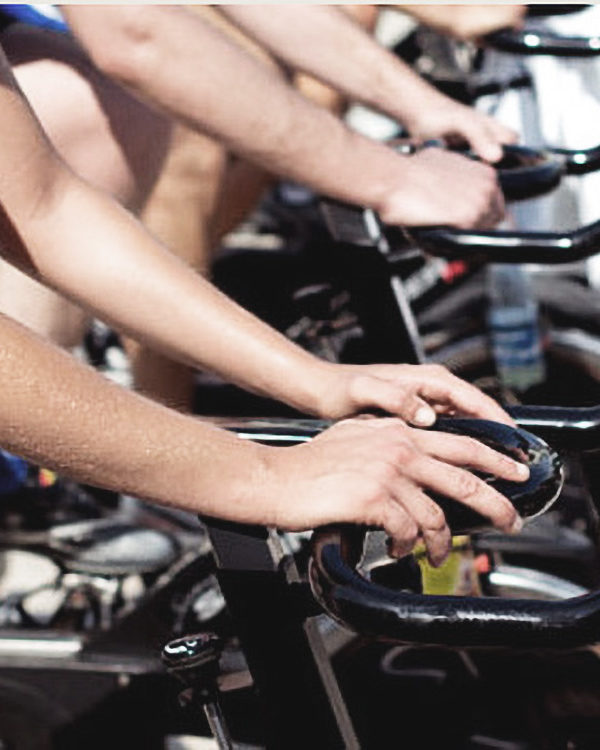Have you been hearing a lot about the Tour De France in the media? Maybe you’ve heard that Australian Cadel Evans is runner up again this year. But for many of us out there we know very little about this historic event, only that it’s a bloody long bike ride somewhere in Europe. So for a quick crash course in the Tour De France, international Tri-athlete and cyclist James Masters (of Fitspace Training) is here to answer your most pressing questions.
1. What exactly is the Tour De France?
A very long 3 week cycling race. 23 days in total. There are 21 days (or stages) of racing and 2 rest days. Each stage is between 160- 230km. There are also 2 shorter time trials spanning between 30-60km which focuses on speed. The course travels mostly in France but also into other countries such as Italy and Spain. Last year it began in London. Each year the course alternates between a clockwise or an anti clockwise direction.
2. What does the yellow jersey mean in the Tour de France?
The person with the lowest accumulated time at the end of each stage, also known as the General Classification (GC) wins the yellow jersey. The person on the last day with the overall lowest time, wins the entire Tour De France. So conceivably someone who never wears a yellow jersey could win the entire GC if they smashed the very last stage (and had been placing 2nd or 3rd on most other days).
There are three main aims in the Tour de France:
- Winning a stage: You get to have a go up on the podium, and you get prizes etc, but you may not get the yellow jersey
- Winning the yellow jersey on a day: You may not have crossed the line first that day, but your overall time is the lowest
- Win the overall race or GC: This is the ultimate aim and biggest achievement, with the most prize money
3. How are Tour de France riders so fiercely competitive, but still work well as a team?
Each team (9 riders) may only have one contender for the crown. The other team member’s main aim is to do everything possible to help their leader have a good race. Their jobs include:
- Fetch water bottles from the team car
- Ride in front of the leader to create a slip stream in the wind
- Swap a bike wheel, or bike if there was a puncture or mechanical issues
- Increase the pace of the whole group to catch break away riders
4. How do Tour de France riders pee?
Pairs (so they aren’t always at the back all the time) or sometimes even peloton stop en masse, and hang a leak on the side of the road. It is normally decided as a group where and when they should stop. There is an unwritten rule that riders do not attack when someone is taking a nature break. (Good to know they’re staying hydrated, right?)
5. How do Tour de France riders eat?
There are designated feed stations on course whereby a crew member stands on the side of the road holding out ‘feed bags’ or ‘musettes’. This is like a satchel that the riders sling over their shoulders. In the pouch is a selection of food such as sandwiches, biscuits, muesli bars, energy snacks and sports gels. The riders take what they want from the bag and put it in their t-shirt pockets, then toss the bag on the side of the road. The entire peloton restocks at the same time and they usually restock once or twice in each stage, eating continuously every half hour.
6. What is EPO?
Erythropoietin or EPO is a performance enhancing drug that increases a persons haematocrits. Haematocrit is the proportion of a persons blood that is made up of red blood cells. Most normal people will have about 38-46% of their blood volume being made up of actual red blood cells. However with drugs like EPO a person’s percentage of red blood cells may increase to over 50%, thickening the blood (which is very dangerous) but also increasing the bodies ability to deliver ever important oxygen to the working muscles.
They used to simply measure someone’s hermaticrite level as an indicator of drug use, but some athletes are freakish and naturally have a higher percentage of red blood cells, and other athletes, with altitude training would also have higher levels. So now the drug testing is much more advanced and they can test the blood to find other DNA structures that differ from their own, and this is how they detect drugs like EPO.
Other common drugs are human growth hormone, testosterone, and amphetamines. However the sport of cycling is now one of the highest targeted sports for drug testing and therefore extremely clean. It is virtually impossible not to get caught with the number of tests being done nowdays, as this current Tour has proven.
7. Can women race in the Tour de France?
There is a female Tour De France – the Tour de France Femmes – which is shorter and much smaller with little prize money or media coverage. Typical!
8. Any other interesting facts about the Tour de France?
Lance Armstrong (from Texas) won the race 7 times in a row (1999-2005)! On one stage, he once lost 7kg in one hour due to dehydration. There are 5 other guys who have won it 5 times. Many of these athletes will compete at the Olympics as well. In the Olympics the race is usually equivalent to one stage of the Tour. They burn 5000-7000 calories in one day.
So that’s the low down on the Tour De France. If you’re are a cycling fan or if you know any other interesting facts about the Tour, I would love to hear about it.




Recent Comments